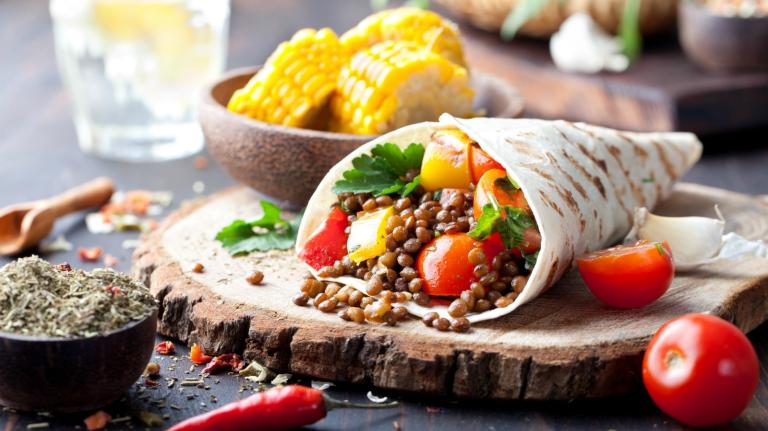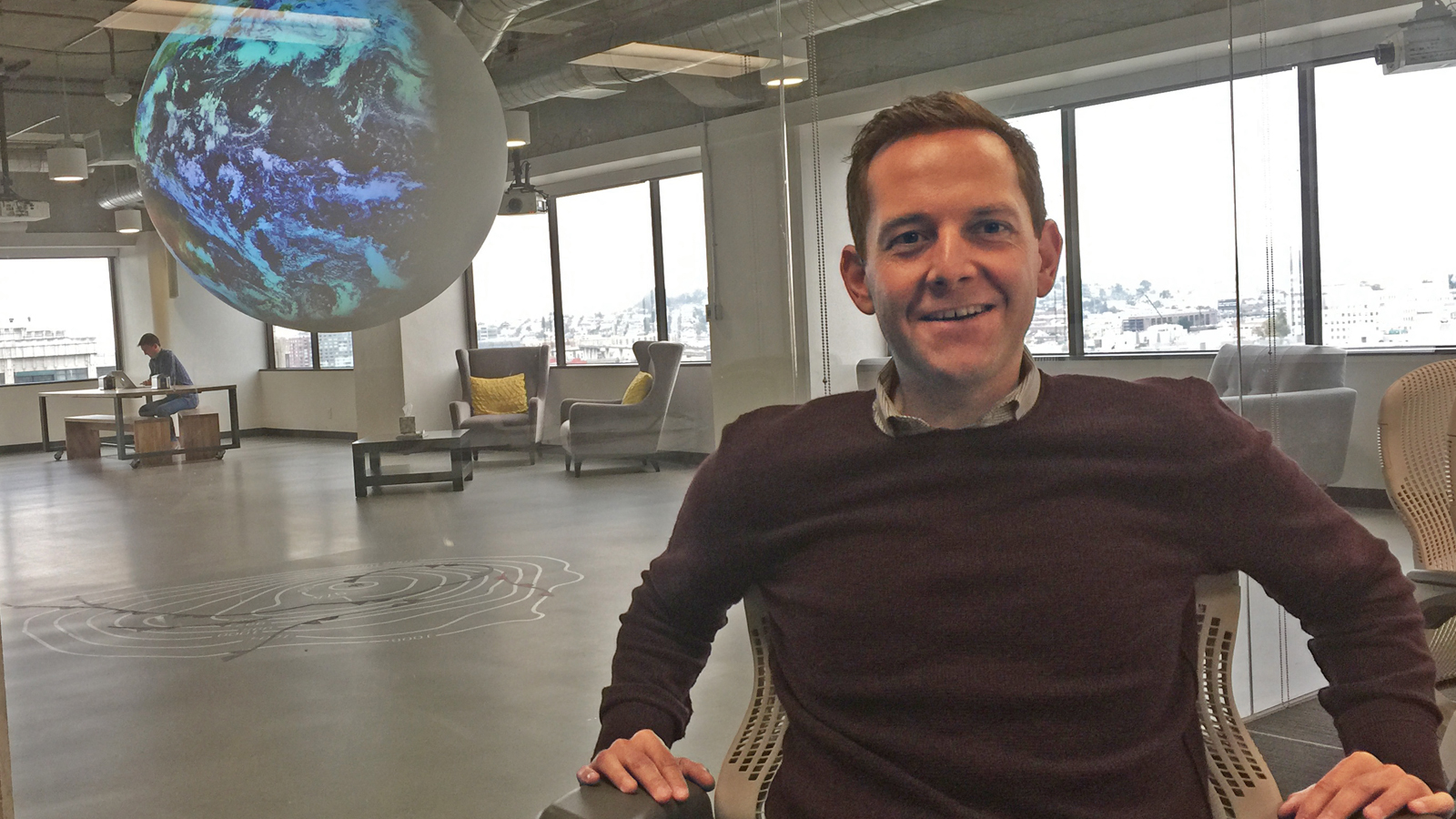David Friedberg is a lifelong vegetarian. He was president of his high school’s “Healing Our Planet Earth” club. He’s a major investor in a restaurant chain that serves only bowls of quinoa. The 35-year-old software designer is also an unapologetic advocate of Monsanto, which bought his start-up, The Climate Corporation, in 2013 for a cool $1 billion.
In the two-plus years since the Monsanto acquisition, Friedberg has more than doubled the size of his business. His employees, now numbering more than 500, build software tools that crunch massive amounts of data on weather and farming conditions, helping farmers to manage the risks of weather volatility, and to make decisions about virtually all aspects of their operations — from how much fertilizer they should apply to what seeds they should plant and when. A year ago, Friedberg’s software tools were used on 50 million acres of U.S. farmland; today they’re used on 75 million acres — nearly half of all corn and soybean acres planted in the U.S.
I visited Friedberg recently at his San Francisco headquarters to find out how and why this controversial wunderkind is bringing high-tech environmental software to one of the nation’s oldest, most conservative industries.
Q. First off, how does an ex-Googler with a history in astrophysics end up building tools for farmers?
A. I certainly wasn’t intending to. Initially, I was interested in simulating the weather and using those simulations to help people insure their businesses against bad weather. Among these businesses, agriculture became more and more appealing. I’ve come to realize that there are two primary consumption markets on Earth: One is the energy market, which is designed to feed machines. And then there’s the food market, which feeds people. Without those two markets, none of the other markets work. You can’t have commerce and trade and build things, and generally move further up the ladder of what it means to be a human, if that fundamental need for food isn’t met. So I love the scope, the significance.
Q. Your timing is good, given that farmers are getting increasingly tech-savvy.
A. Yes — there’s clearly a digitization trend happening on planet Earth broadly, and specifically in agriculture. Everything that a farmer once was and once thought about his business has completely transformed in the last 10 years. Less than 10 percent of farmers had mobile phones or used the internet 10 years ago. Now it’s over 90 percent, and about 60 percent of U.S. farmers use a tablet.
Q. And agriculture itself is getting digitized.
A. Yeah, almost everything that’s happening on the farm is being digitized. You can think about it in three layers: There’s the atmosphere, the field, the soil. We’re ingesting all this data about what’s happening in the atmosphere — rainfall and temperature measurements, radar — all that data from satellite and weather stations. We’re also pulling in data about what’s happening in the field: Tractors and farm machinery stream information about how much fertilizer and pesticide is being sprayed, how much seed they are putting down, what kind of seed, and so forth. Then drones and remote sensing platforms are looking at electromagnetic radiation, light coming off the field that gives information about crop health. And then there are new ways of observing soil, picking up characteristics of chemical composition and so forth.
Q. So you’re crunching a hell of a lot of data.
A. A couple hundred gigabytes a day.
Q. What do you do with it exactly?
A. We try to project what’s going to happen on the farm, and determine how you can increase the likelihood of a successful yield. So there was a farmer in Georgia in 2014 who got a 503-bushel-per-acre corn crop. That’s insane. It’s very rare to get above 220 or 230 bushels per acre. The average in the United States in 2014 was 174. He used the right amount of nitrogen at the right time, the right seed, the right type of soil, the right amount of water — all of these decisions informed by the predictive capabilities of what’s happened in the past, and the modeling of future growing conditions. That’s not a typical example, but it gives you a sense of what’s possible when you use a “systems” approach.
Q. Your company has morphed from one that would help people and businesses adapt to climate change to one that’s helping large-scale farmers increase yields. Some would argue that this new mission hurts — not helps — the environment.
A. I would argue that using data to help farmers maximize profit and increase yield goes hand-in-hand with sustainability. Farmers use huge amounts of fertilizer and power and water to grow crops, and there’s a lot of room for optimization there, for efficiency. That’s a big opportunity for innovation — I view it to be the biggest.
Farmers like to feel safe. There’s the mindset: “I want to spray my field with enough nitrogen to feel safe, and have some left in the soil.” We had a farmer who used our Nitrogen Advisor product last year, for example, which shows you a chart of how much nitrogen will be left in your field every day for the rest of the season. He was gonna do a spraying of nitrogen, but our tools showed that even without the spraying he would have enough nitrogen to make it to a 220-bushel yield, and still have nitrogen left in the soil at the end of the season. And so he said, “OK, I won’t do the spraying.” And he saved hundreds of thousands of dollars by not doing that spraying, and got the 220-bushel yield. He said, “Wow, I’m gonna tell everyone about this.”
To farmers, “optimizing” nitrogen efficiency is about saving money, improving their business, taking care of their family. But it also means you’re not wasting stuff and throwing it in the environment and causing damage to your own land and creating hypoxic zones.
Q. Does a culture clash occur when progressive IT people from San Francisco, the land of Nancy Pelosi, go into conservative agriculture circles to sell a climate-related product?
A. The tension is less about the liberal San Francisco guys versus the more conservative red-state farmers. It’s more profound than that. Because farmers know their land. They know it to their core. They’ve farmed it for years, for generations, typically. So for someone to come along and say, “I know your land better than you do because I have this data,” that disturbs something that’s almost fundamental to their identity. They don’t want to believe it at first. It takes time to earn their trust.
Q. Do your customers bristle at your brand — at this association between your products and the issue of climate change?
A. Like with any business, the brand takes on its own identity, so it’s less about the word “climate” and more about making Climate Corp. known for designing software tools for farmers.
But our customers are well aware that the No. 1 thing they can’t control, and that drives every farming outcome, is the weather. Our weather data factors into virtually everything we do. So, for example, the Nitrogen Advisor is critically dependent on very good high-resolution weather data: If it’s very rainy weather, it’s going to cause more nitrogen to come out of your soil.
Q. How has the Monsanto acquisition affected your sales?
A. It has gotten us much broader reach, no doubt. Monsanto has several hundred field reps that work with thousands of local dealers, that sell products to farmers. And that’s a network that we didn’t have access to prior to the acquisition. Monsanto provides validation in a meaningful way, and that validation gets us in the door. But then it’s up to us to develop the trust factor — getting farmers to see the value of our tools. That’s what gets the adoption and the growth.
Q. What’s been the downside of joining Monsanto?
A. We were less than 200 people when the acquisition happened in 2013. And we’re now over 500. Growing a company that fast is always tumultuous.
Q. But do you feel any regret — that you made a Faustian deal?
A. No. I’m incredibly excited. The common view of Monsanto is simply misguided and inaccurate. It took me a lot of research into the history and business practices of Monsanto to understand this. I took a bunch of CEOs from Silicon Valley out to Monsanto. People in Silicon Valley like Monsanto. They understand that revolutionary science — from Galileo to Mendel to Einstein — has always provoked hatred on a mass scale. They think it’s funny how Monsanto is bedeviled. But, I mean, Google’s been bedeviled, Facebook’s been bedeviled, even kale’s been bedeviled.
Q. You actually feel like Monsanto improves your chances of doing environmental good?
A. Absolutely. And it’s not just about reducing fertilizer usage or helping farmers manage the risks of climate volatility. One of the things that has been most gratifying for me personally is seeing how we can help Monsanto apply data science to how their seeds are bred and grown. This is important in terms of helping the climate: If you get the seed genetics right, you can now grow a plant more efficiently.
One day, hopefully, we can put a seed in the ground and it won’t need any watering at all, it won’t need nitrogen. Maybe it won’t even need soil. It can just use the sun and it can create, magically, the perfect nutrient profile. It will be delicious and complete. Everything between now and then may be some iteration toward that future.



